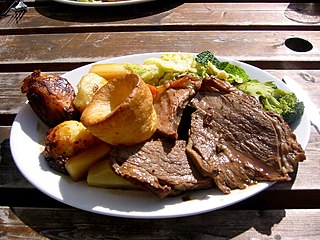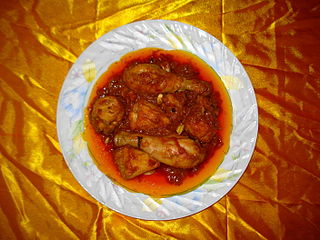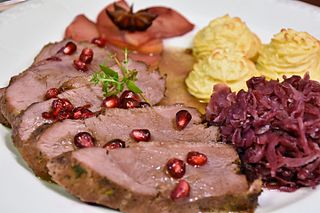Advertising
This section needs additional citations for verification .(July 2022) |
Bisto is notable both for the age of its brand and for the advertising campaigns it has used. In 1919, the Bisto Kids (created by illustrator Will Owen (1869–1957) [4] ) appeared in newspapers and soon became popular. The Bisto Kids were a boy and girl in ragged clothes, who would be illustrated catching the aroma of Bisto on the breeze and exhale longingly, "Ah, Bisto!"

The Bisto Kids were also part of more elaborate advertising campaigns in later years. The Bisto Kids have not been included in Bisto advertising since 1996. [5]
Many Bisto adverts shown on television through the years on British and Irish television are available on websites such as YouTube, Dailymotion, Classic TV Adverts, Retro TV Adverts, History of Advertising Trust, Vimeo and TV Ark.
1930s
In Birmingham in the 1930s a competition was held to choose a name for the two Bisto twin characters, a boy and a girl smelling Bisto's gravy. The competition was won by Mr and Mrs Simmonds, who named the twins after themselves, calling them Bill and Maree.
1950s
During the 1950s "Bisto For All Meat Dishes" was one of their first television advertisements.
1960s
During the 1960s adverts included "Pass The Gravy Pass The Bisto" and "Does Cooking Proud". At the end of the decade television adverts changed from monochrome to colour. Bobby Moore featured in the first colour advert for Bisto gravy in 1969.
1970s
During the 1970s popular advert phrases included "Where there's meat there's Bisto" and "Browns, seasons and thickens all in one" in a series of family adverts shown on television with celebrities such as Gordon Banks, Anita Harris, Henry Cooper, John Pertwee, Billy Bremner, Dick Emery, Terry Wogan and Alan Ball.[ citation needed ]
1980s
During the 1980s, the company released a series of ads in the UK which featured a song that included the recurring phrases like, "You Can't Kid A Bisto Kid" adverts that featured 1) Sandcastles 1980, 2) Bisto kids jumping out the window, also Bisto kids jumping off a slide in 1981 and 3) Family in 1982, "Much More Ahh" series with Lysette Anthony and Tarzan in 1984, Monkeys and Ghosts in a Halloween edition in 1985, "Never in a month of Sundays" series of 3 adverts 1) Car in the 1983 advert, 2) Mole featured Chris Wilkinson in the 1984 advert and 3) Music Playing in 1985 advert, "Now You're Home" an advert with a bus and school dinners ran (1987–1990), "Only Bisto Puts The Ahh into Gravy", "Insist On Bisto" was a series of family adverts, rectory and bistro, "For A Winner Of A Dinner" shown in Ireland only in 1987 and "When It's Dry Let It Pour". Chef Ruth Watson had a family advert for it in 1986.
In 1984 RHM Foods launched a nationwide competition to find children to act the role of the Bisto Kids, the recurrent "The Bisto Kids of the Year Awards". The first ever competition was won by Hayley Griffiths and Jimmy Endicott from Doncaster. They were six years old at the time and became the faces of Bisto, both for public relations and marketing events, and also appeared in an advert shown on prime time TV to find the next Bisto Kids.[ citation needed ]
Bisto sponsored the ITV Telethon in 1988.[ citation needed ]
1990s
Adverts for Bisto gravy during the 1990s included the Dean Martin song Memories Are Made Of This. Other phrases were "Real Gravy in No Time at All", Vanessa Williams in a series of adverts called Save the Best for Last for Bisto Best range (1993–1996) and "It Put's The Ahh into A Meal" series (1990–1992) and a series with Julie Walters (1996–1998). In a 1993 advert for Bisto Fuller Flavour Gravy Granules a young couple for dinner on a train featured the Orient Express just before rebranded as Bisto Best.[ citation needed ]
2000s
During the 2000s adverts including in the early part of the decade "Gravy Matters" series of adverts (1999–2002) in Great Britain only, 100 years in 2008, Make A Great Meal Special shown in Ireland only.
2010s
During the 2010s adverts including "Now You're Talking".
The company sponsors the Bisto Book of the Year Awards in the Republic of Ireland.
The latest campaign[ when? ] for Bisto encourages families to sit up at the table for one night a week to eat 'proper' food.[ citation needed ]
















